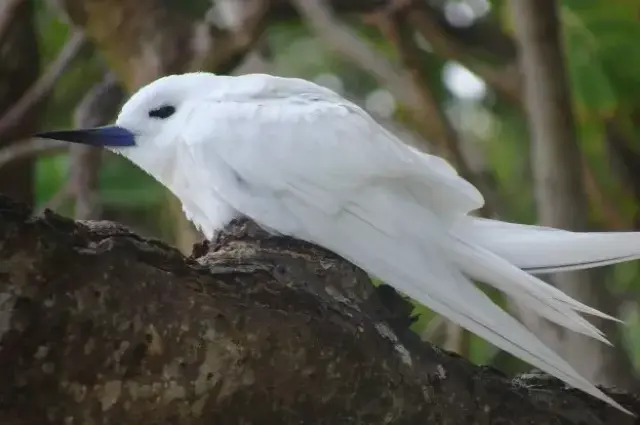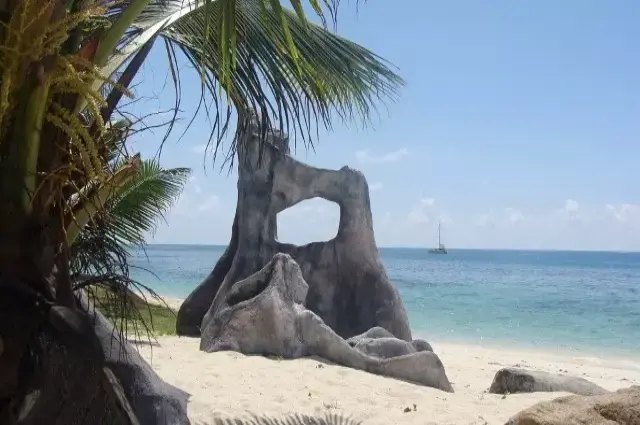Seychelles Nature
Get in touch with our Seychelles specialists Dan & Jo today by email, contact form or by calling +44 (0)1580 712 690
Vallée de Mai
The UNESCO World Heritage-listed Vallée de Mai in Praslin is one of two islands in the Seychelles (and therefore the world) where the infamous Coco de Mer palms occur. The largest, heaviest seeds on Earth; the Coco de Mer can weigh up to 42 kilograms and span over half a metre in diameter. These enigmatic palm products are something of a Seychelles staple due to their endemic nature.The Coco de Mer’s symbolic history has been a colourful one, once thought to grow on underwater trees and to hold mystic healing qualities. Now, it is believed that new nuts are produced by intercourse between male and female trees when the two embrace on a stormy night. This may be something to do with the large appendage boasted by the male palms and vulvic aesthetic of female fruits. Its pelvic nature and sexual folk narrative must go some way to explain the usage of its soft, jellyish flesh, which is allegedly an unparalleled aphrodisiac.
Unfortunately, the Coco de Mer’s renown has led to their fervent scavenging and near-extinction. Now, these hallowed seeds are protected by the government, illegal to eat and each one must have a license in order to be exported. Their value is therefore unsurprising; you can find individual Coco de Mers on EBay for upwards of £700.
The park is also home to the endemic Seychelles bulbul and the endangered black parrot. Three hiking trails wind their way through the foliage, stretching just 1 or 2 kilometres, making the walk ideal for couples and families with young children. The park also hosts a visitor centre, cafe and gift shop.
Morne Seychellois National Park
Occupying over 20% of Mahé’s land area, the Morne Seychellois National Park is an unmissible excursion for those visiting the Seychelles’ main island. The Park is home to Mahé’s highest peak (from which it takes its name), which sits at 905 metres and offers spectacular views of the surrounding scenery. The site is also registered as an ‘Important Bird Area’ due to its population of Seychelles scops owls, Seychelles swiftlets and Seychelles bulbuls amongst others. The Morne Seychellois National park also includes the idyllic Anse Major and Bay Ternay beaches, providing the perfect way to cool off after a mountain hike.Cousin Island
Cousin Island Special Reserve lies just off the coast of Praslin and is managed by the ‘Nature Seychelles’ organisation. The Island was bought in 1968 to protect the remaining population of Seychelles warblers, of which there were only 28 in existence at the time. Now the population is thought to be over 3000 and conservation efforts, including the eradication of alien pests, has meant the return of many endemic species.Cousin is visited by 300,000 nesting birds every year and has the highest density of lizards per hectare in the world. It is also the most important breeding site in the Western Indian Ocean for the critically endangered, Hawksbill turtles.
The Special Reserve area also includes the surrounding marine area up to 400 metres off shore. As a result, Cousin presents one of the best snorkelling points in the Seychelles. Its biomass is reported to be the most diverse of any reserve in the granitic islands.
Curieuse Marine National Park
Curieuse is the only other island in the Seychelles and world, besides Praslin, where the infamous Coco de Mer palms occur. Known for its red sand, the island is also home to over 500 Aldabra giant tortoises. Driven almost to extinction by sailors in the seventeenth and eighteenth centuries, these tortoises were often taken aboard ships as live food sources for long voyages.Fortunately, a few members of the species survived in the Aldabra Atoll from which the reptiles take their name. Now, due to numerous conservation efforts, these animals have been brought back from the brink and number well over 100,000. Adwaita, of Kolkata zoo is thought to be among the longest living animals in history, dying in 2006, aged 255. Despite being some of the longest living tortoises in the world, Aldabras are known to risk death by standing on their hind legs to reach food; if they fall on their back they may not be able to right themselves again.
Silhouette Island National Park
Unlike the archipelago’s other major islands, Silhouette is formed from a volcano, its mountainous interior thus accommodates a completely unique and often endemic biodiversity; its 5 peaks (all over 500 metres) constitute some of the most dramatic scenery in the archipelago. So precious is the island’s flora and fauna that the National Park covers 93% of the landmass and there are no roads to speak of.Silhouette is one of just three islands in the Seychelles where the critically endangered (there are thought to be less than 100 in existence) sheath-tailed bats occur and is certainly their largest roost. Beautiful orchids and pitcher plants are familiar sights.











